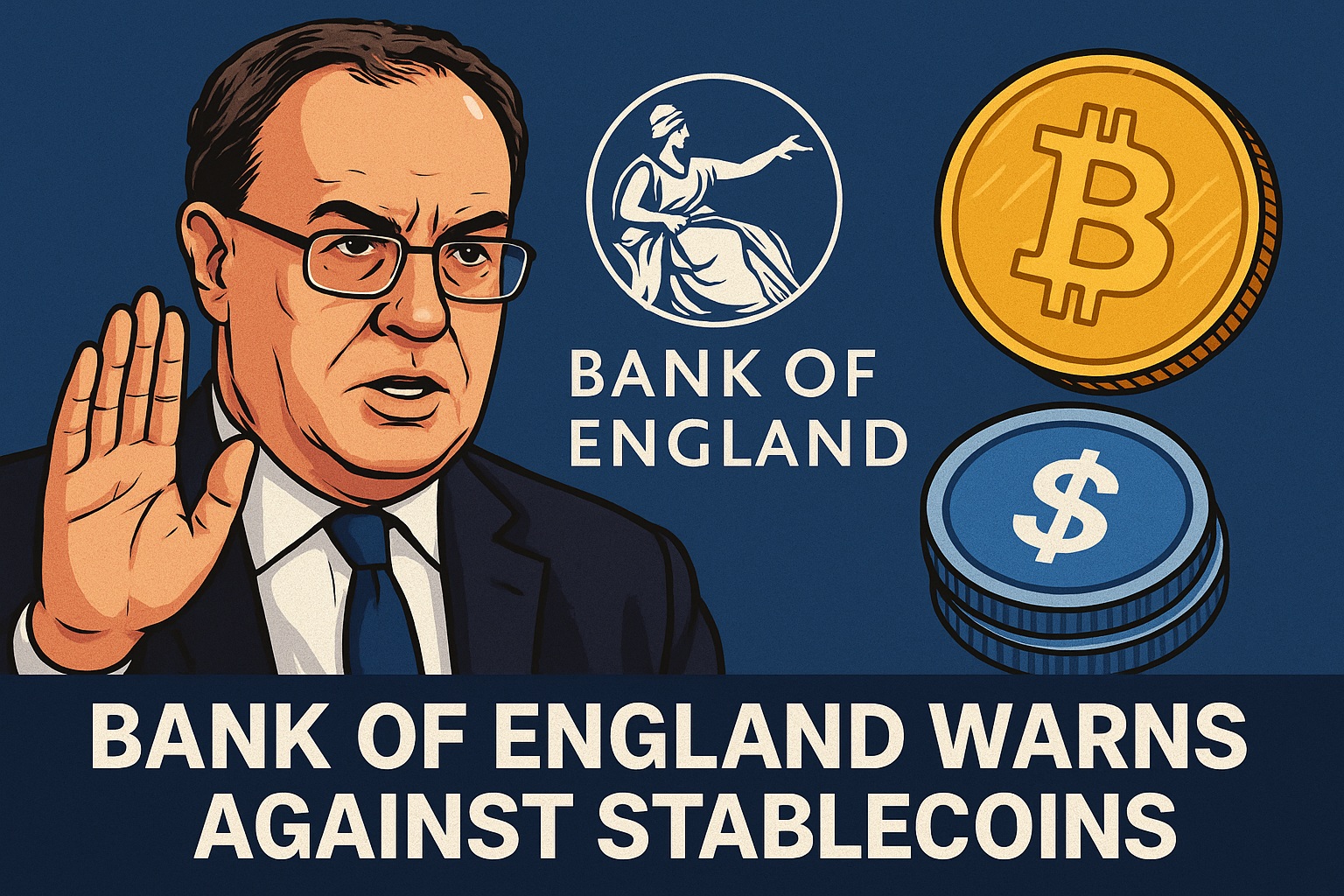As stablecoins gain momentum across global financial systems, central banks are taking sides. The United Kingdom has chosen a cautious stance, emphasizing monetary sovereignty, while the United States embraces innovation to expand the global reach of the U.S. dollar. This policy divergence highlights the geopolitical tug-of-war shaping the future of digital currencies and financial regulation.
UK Central Bank Flashes Red: Rejects Stablecoins, CBDCs, and Bitcoin
Bank of England Governor Andrew Bailey has issued a strong warning regarding the systemic risks posed by privately issued stablecoins. In an interview with The Times, he emphasized:
“Allowing private banks to issue stablecoins introduces systemic risks to the financial system.”
Bailey expressed concerns that digital assets could undermine governments’ control over monetary policy and compromise national sovereignty. Instead, he advocates for traditional banks to explore tokenized bank deposits as a safer alternative for digital payments infrastructure.
He also reiterated his skepticism toward central bank digital currencies (CBDCs) and advised the public to avoid investing in Bitcoin:
“It’s not money, and it doesn’t function like money. If you’re thinking about buying it—do so with your eyes wide open.”
As the newly appointed Chair of the Financial Stability Board (FSB), Bailey’s positions may influence global regulatory approaches toward stablecoins, potentially narrowing Europe’s regulatory tolerance.
The U.S. Pushes Forward: Stablecoins to Reinforce Dollar Dominance
In contrast to the UK’s conservative tone, U.S. policymakers are treating stablecoins as a strategic tool to strengthen dollar hegemony. Treasury Secretary Scott Bessent has publicly stated:
“Stablecoins help reinforce the U.S. dollar’s role as the world’s reserve currency, while channeling U.S. debt instruments into global markets to reduce inflationary pressure.”
Federal Reserve Chair Jerome Powell also supports creating a clear regulatory framework for stablecoins. By enabling the issuance of stablecoins backed by U.S. Treasuries or fiat reserves—like USDT and USDC—Washington aims to digitize U.S. financial assets and extend dollar usage globally, especially among mobile-based crypto wallet users.
Europe Divided: Innovation vs. Sovereignty Concerns
Europe presents a mixed response. While France’s Société Générale launched a USD stablecoin on Ethereum for institutional use, other nations like Italy have raised red flags. The Italian Finance Minister warned that USD-backed stablecoins could displace the euro in cross-border payments and foreign reserves.
Crypto researcher Ignas has echoed similar concerns within the crypto community, arguing that the dominance of U.S. stablecoins introduces structural risk and calling for more non-USD alternatives.
Despite their benefits—improving digital access to fiat currencies—stablecoins present a dilemma for sovereign nations. The Bank of England’s cautious approach reflects a deeper tension: how to embrace innovation without relinquishing control over monetary policy.
Disclaimer: Cryptocurrency investments are highly risky and may result in the loss of your entire capital. Please assess your risk tolerance carefully.

![[News] Bitcoin at a Turning Point? 10x Research Signals a Bullish Macro Shift Ahead](https://cryptoexplores.com/wp-content/uploads/2025/06/new20250616.jpg)
![[News] Binance Lists $HOME, the Gas-Free, Bridge-Free All-in-One DeFi App](https://cryptoexplores.com/wp-content/uploads/2025/06/news20250617.jpg)